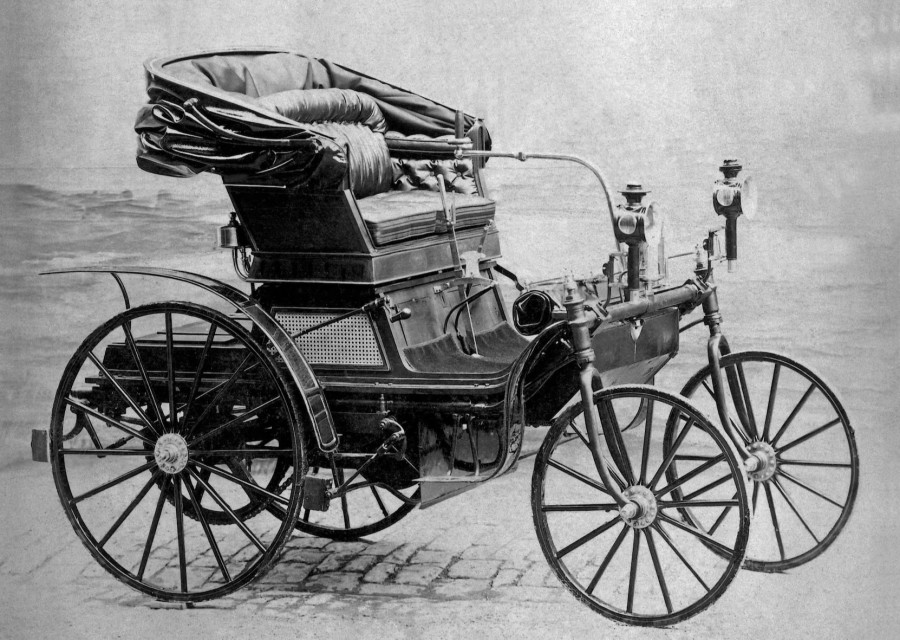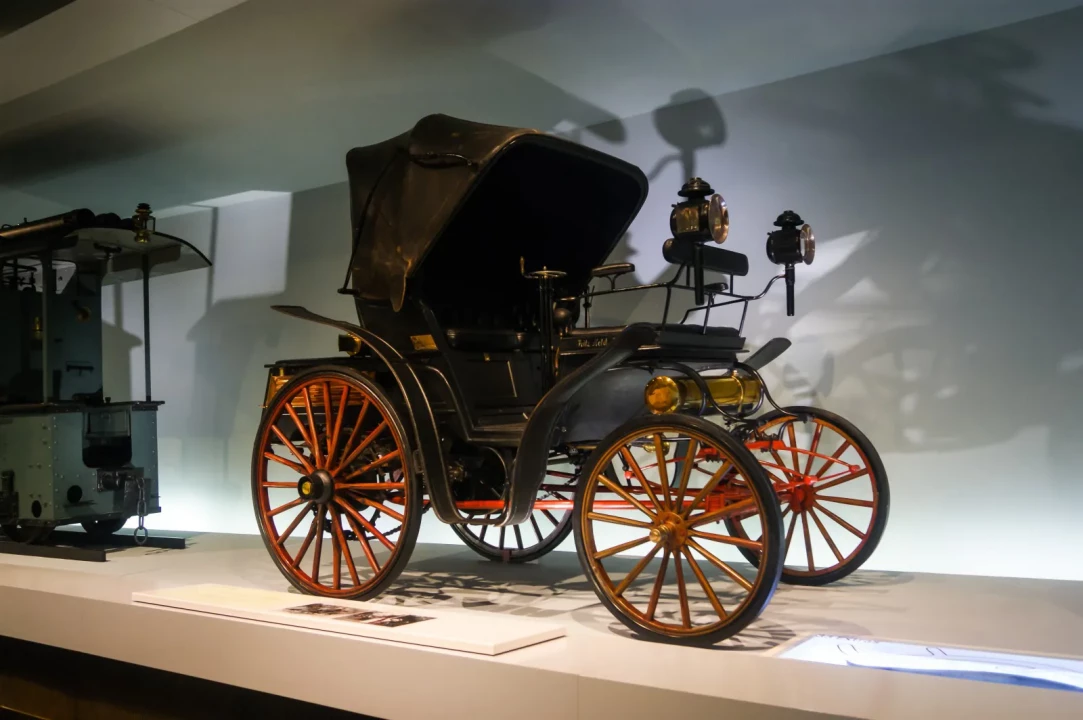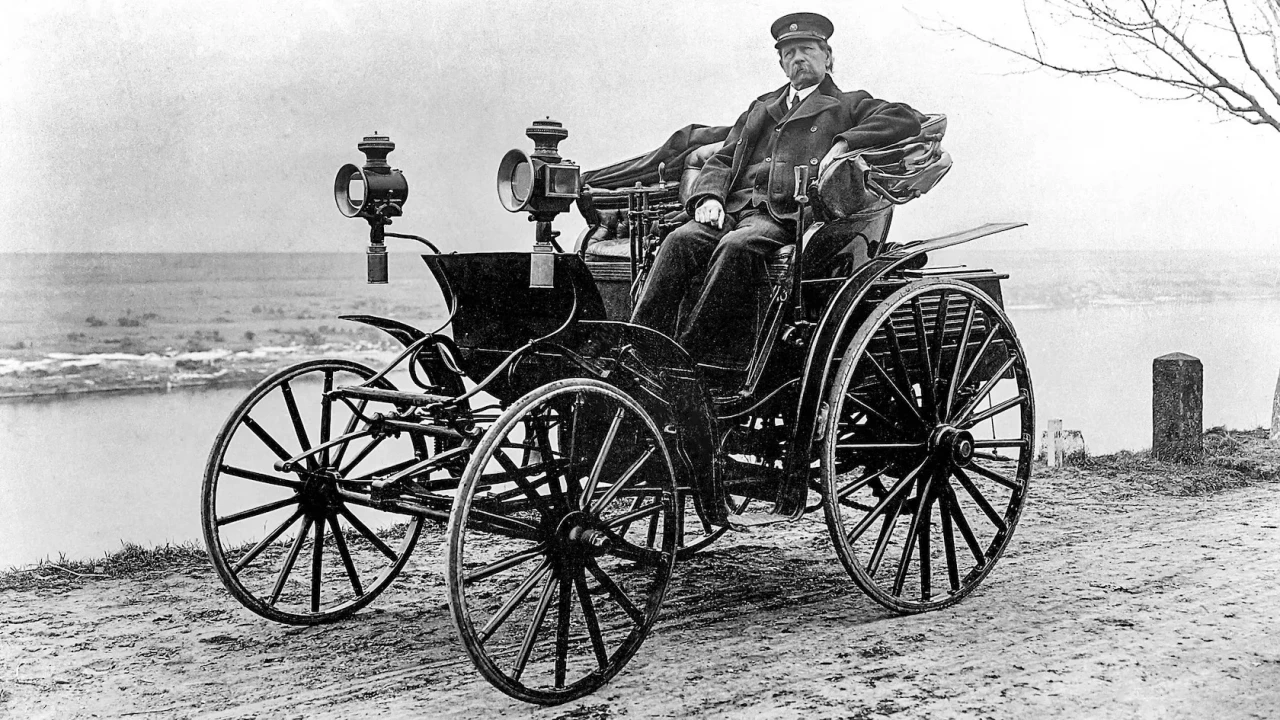The history of taxi services: From the first taxi to today

Taxi services are now an integral part of modern urban mobility, something we are all accustomed to. There is hardly anyone, especially those living in large cities, who has not had to take a taxi at least once. Today, we take it for granted that with just one phone call, text message or mobile app, we can call a taxi to take us from point A to point B. In reality, the journey from the first taxi to the services we have today has been long, exciting and filled with a series of technological and social transformations.
When did the history of the taxi actually begin? What was the first taxi in the world and what did it look like? In this article, we will seek answers to these and many other interesting questions. We will trace the long history of taxi services – from horse-drawn carriages and horse-drawn carts to modern electric cars with navigation and apps.
The beginning: horse-drawn carriages as the first ‘taxis’

Although we cannot talk about ‘taxis’ in the modern sense of the word, the idea of paid passenger transport has existed for millennia. Historians have found evidence of various forms of hired transport in ancient civilisations such as Rome, Greece, China and India. However, it was horse-drawn carriages that laid the foundations for what we now call taxi services.
Horse-drawn carriages were widely used in Europe from the 17th century onwards and were the most common form of urban transport before the advent of modern motor vehicles. They were hired for specific routes, often at a pre-agreed price, and in large cities they even had designated waiting areas. These horse-drawn carriages were not just a means of transport, but a model of behaviour in which a person could hire a driver for a short time and for a fixed fee.
The dawn of the modern taxi
The real transition to an organised, regulated and accessible form of hired transport began with the development of European cities and the onset of industrialisation. With increasing urbanisation and the intensified flow of people, the need for systematic transport services arose.
In 1605, the famous ‘Hackney carriages’ appeared in London. These were the first officially registered carriages for hire. The word “hackney” comes from the French ‘haquenée’, which means a light riding mare. These carriages did not have a fixed price at first, but the need for regulation quickly arose to prevent fraud and arbitrariness.
In 1635, King Charles I introduced regulations on the number and movement of hire carriages in London, thus establishing the legal framework for this service. A little later, in 1662, the Paris Parliament officially licensed the first urban hire vehicle service. This was also the moment when taxi services began to take on an organised form, with mandatory licences, registered carriers and fixed prices per route.
These services quickly spread to other European capitals, such as Vienna, Berlin and Madrid. Carriage transport became a familiar and sought-after means of mobility in developing metropolises. Over time, carriages began to offer not only prestige but also practicality – more and more middle-class citizens began to use them for their daily needs.
The first motorised taxi in history

The world's first motorised taxi appeared at the end of the 19th century and marked a turning point in the development of urban transport. In 1897, in the German city of Stuttgart, Gottlieb Daimler (one of the pioneers of automobile manufacturing and founder of Daimler-Motoren-Gesellschaft, the predecessor of Mercedes-Benz) created and equipped a car with the first taximeter, a device that measures the distance travelled and calculates the cost of the journey.
This first taxi was based on the Daimler Victoria model – a motorised internal combustion vehicle designed specifically for taxi services. The taximeter installed on it was invented by German inventor Friedrich Wilhelm Gustav Brun, and it is to this word – taxameter (taxameter in German) – that we owe the modern name ‘taxi’.
Here is some information about it:
- Year of manufacture: 1897
- Engine power: approx. 4 hp
- Maximum speed: 16–25 km/h
- Fuel: petrol
- Capacity: 2 to 3 passengers
The evolution of cars
The first motorised taxis at the end of the 19th and beginning of the 20th centuries were heavy, noisy and expensive to maintain. They often required serious mechanical maintenance and were only accessible to a small number of people. In the 1920s, the automotive industry began to offer lighter and more economical models, which changed the face of taxi services.
One of the symbols of the era was the American brand Checker, which quickly became popular in large cities due to its durability and spacious interior. It was then that the tradition of yellow taxis was established – initially chosen for its high visibility, it later became a trademark of New York.
With the advancement of technology in the 1950s and 1960s, cars became more reliable, and with that, the service became more convenient for customers. The first radio stations appeared, allowing for real-time dispatch coordination. In the 1980s and 1990s, automatic cash registers, electronic taximeters and GPS devices digitised trip management. Customer comfort also improved, with air conditioning, more comfortable seats and quieter engines becoming standard.
The history of taxis in Bulgaria
The history of taxi services in Bulgaria began in the early 20th century, when urban transport gradually began to modernise. In 1912, the first motorised taxi was registered in Sofia – a Fiat light vehicle, which marked the beginning of a new era in transportation. In the following decades, the number of taxis in the capital and other large cities gradually increased. By the 1930s, taxis were a common sight on the streets, although they were mainly accessible to the wealthier classes.
With the advent of democratic changes after 1989 and the transition to a market economy, there was a rapid increase in the number of private taxi companies. The service was liberalised, and various companies with their own identities, colours, tariffs and standards appeared. Light signs, radio links with dispatch centres and more reliable cash registers were introduced. Competition between companies led to better service quality, but also to the need for stricter regulation.
In recent years, digitalisation has transformed the Bulgarian taxi sector. Mobile apps for ordering taxis have become widespread, making it easier, faster and more transparent to use the service. Electric taxis are also appearing in some cities as part of efforts to make urban transport more environmentally friendly. Thus, from a luxury convenience at the beginning of the century, the taxi has become an integral part of the daily rhythm of millions of Bulgarians.
Interesting facts about taxis
- The yellow colour of New York taxis was chosen in 1907 by entrepreneur John Hertz. Research at the time showed that yellow was the most easily visible colour from a distance, so he chose to paint all his cars yellow.
- In London, to become a licensed black cab taxi driver, you have to pass an exam called The Knowledge. Candidates study for about 3–4 years and must know over 25,000 streets and 20,000 landmarks by heart.
- In Tokyo, taxi drivers usually wear white gloves and suits, and many of the doors open automatically – at the touch of a button by the driver, so they don't have to get out.
- The most expensive taxi in the world is in Oslo, Norway. The city has high initial fares and additional charges for luggage, passengers and night driving, which can add up to a hefty bill.
- The fastest taxi is a record-breaking Bugatti Veyron model, temporarily used in Qatar as a luxury taxi capable of reaching over 400 km/h. Of course, this was more of an advertisement than a real service.
- In Havana, Cuba, you can still see taxis that are classic American cars from the 1950s – well maintained and restored, often driven by the same family for generations.
- In Manila, Philippines, there are ‘motorcycle taxis’ called tricycles, which are economical, fast and quite popular in the narrow and busy streets.
- The longest taxi journey and world record was set by three Britons, who travelled 79,000 km in 15 months in a black London taxi. The total amount recorded on the taximeter during the trip was £79,006.80 (approximately $127,530).
Taxis today and tomorrow
Today, taxis include hybrid and electric models that meet modern sustainability and low emission requirements. Mobile apps have replaced the need for direct calls, and intelligent navigation systems minimise arrival times. Many cities around the world are experimenting with autonomous taxis, which could be the next big step in the evolution of urban transport.
But one thing remains unchanged – the need for reliable transport that is there for us when time is short, tasks are many, and the route is important. Taxis are not just a means of transport. It is a mirror of the times we live in – and whatever tomorrow may bring, we can be sure that taxis will continue to move forward – adaptive, accessible and necessary.

